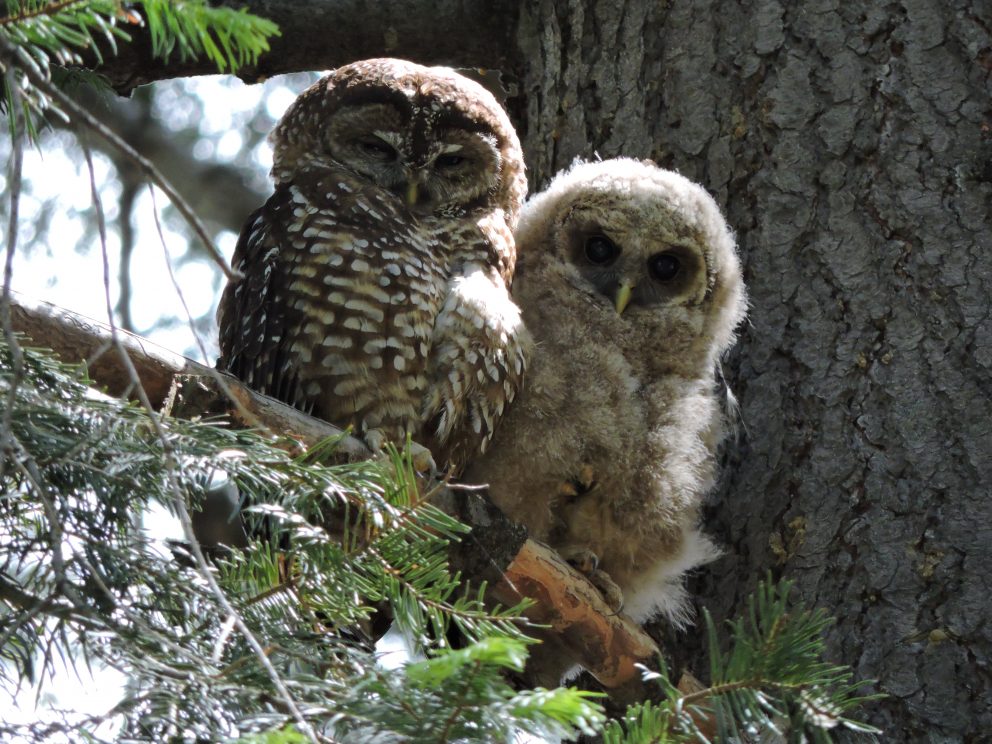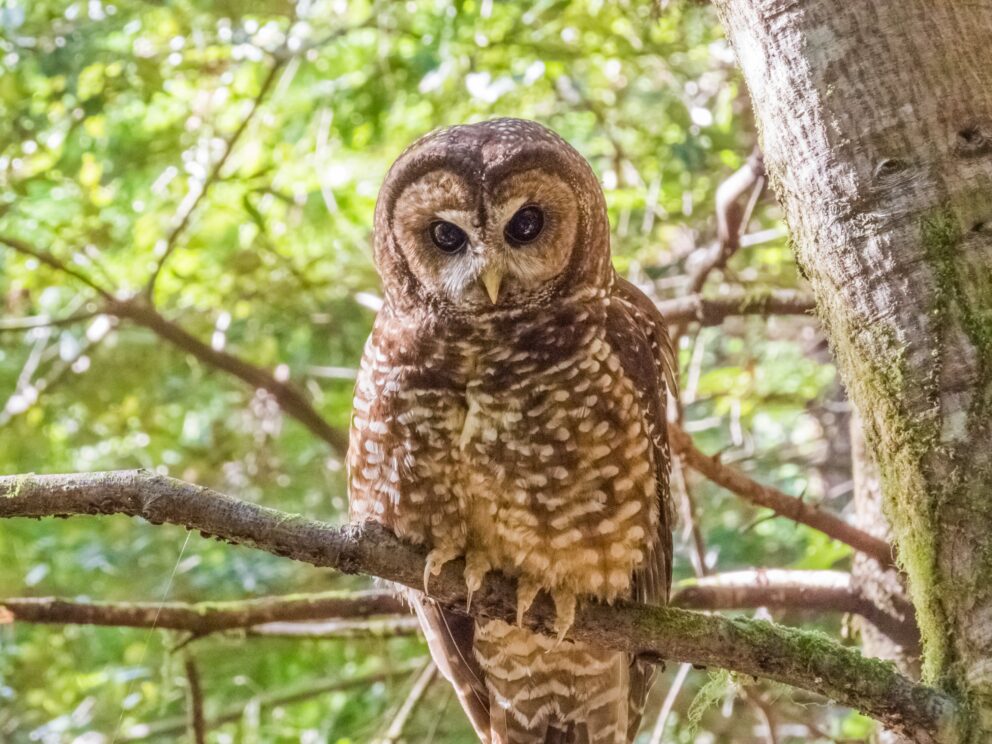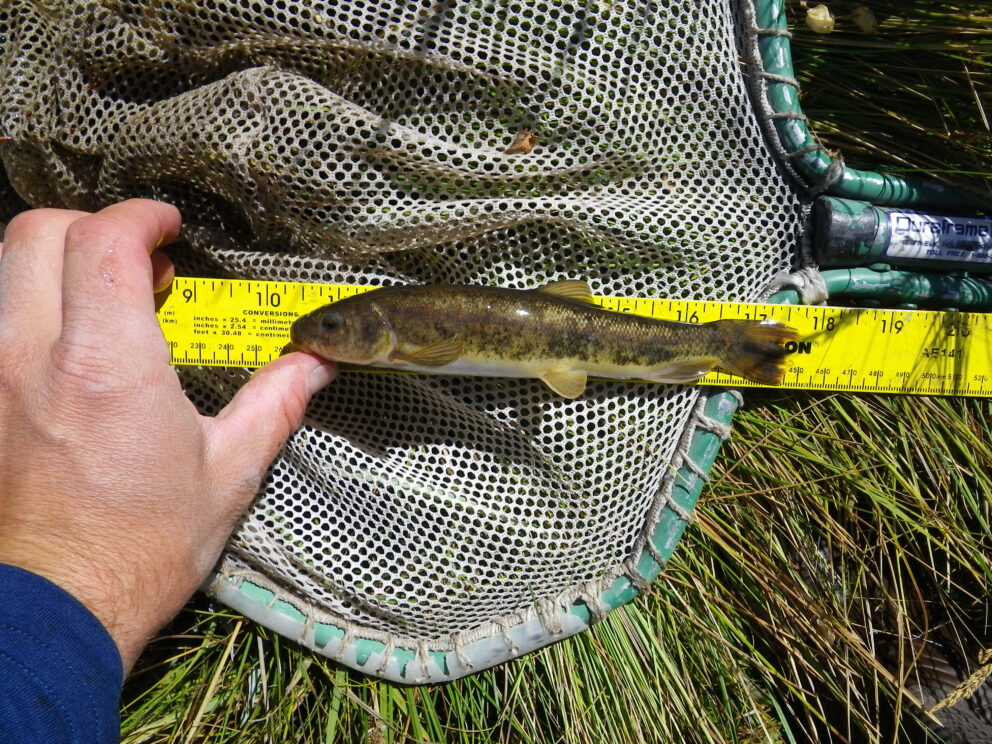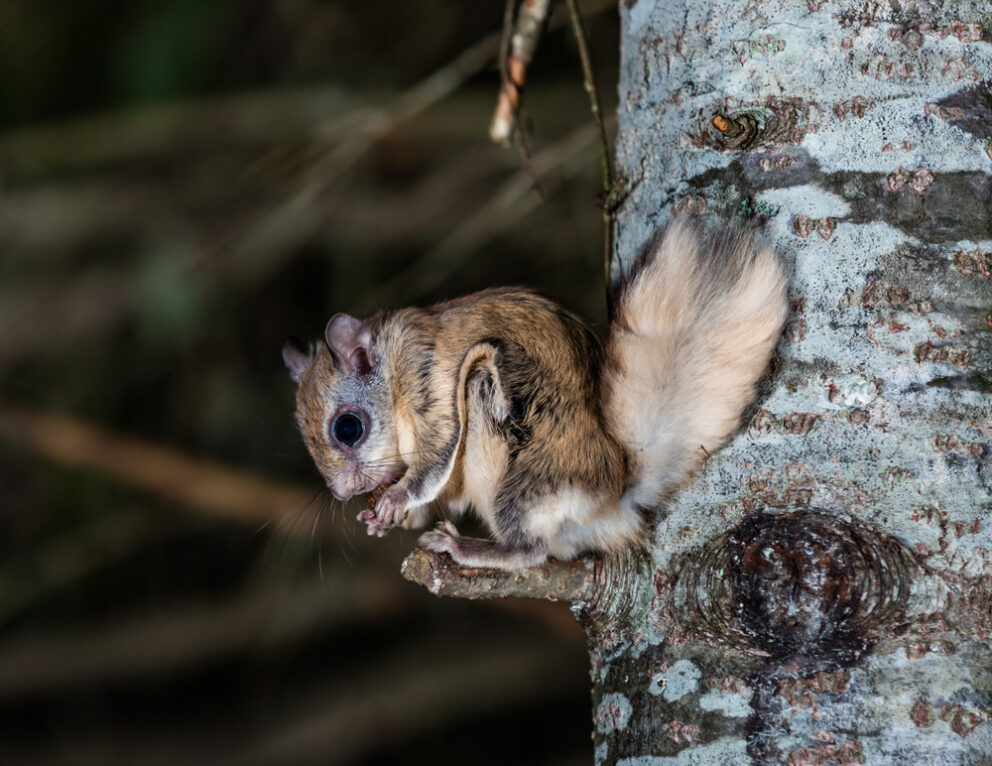- SCIENTIFIC NAME
- Strix occidentalis occidentalis
- CLASSIFICATION
- Bird
- LIFE SPAN
- 5-20 Years
- SIZE
- 15-19” | 1-1.3lbs
- STATE CONSERVATION STATUS
-
- Priority Species
- FEDERAL CONSERVATION STATUS
- Near Threatened
- GAME STATUS
- Non-Game
- GAME TYPE
- None
- Washoe
- Humboldt
- Pershing
- Churchill
- Mineral
- Lyon
- Douglas
- Carson City
- Storey
- Elko
- Lander
- Eureka
- White Pine
- Esmeralda
- Nye
- Lincoln
- Clark
Habitat & Range
The California Spotted Owl’s range extends from Central California to Northern California, with some scattered populations in Southern california forests and canyons.
- Alpine forests of the Sierras
- Cliffs and Canyons
- Pinyon juniper forests
Threats
- Habitat Fragmentation
- Habitat Loss
- Hybridization with Barred Owls
- Urban Development
- Urban Expansion
Natural History
California Spotted Owls eat mostly small and medium sized rodents, with the other portion of their diet being made up of smaller owls, songbirds, amphibians, and some insects. Great Horned Owls and Bald Eagles are common predators of the spotted owl. Spotted Owls have varying nest types depending on their available habitat. They prefer nesting in hardwood tree cavities with thick canopy, but will also settle for holes in steep canyon walls. Nests may consist of one to four young that are altricial, and pairs may not mate every year. These owls will mate for life in monogamous breeding pairs. Young will rely on the parents for guidance and support for two to three months after leaving the nest. They are swift and solitary hunters.
Fun Facts














